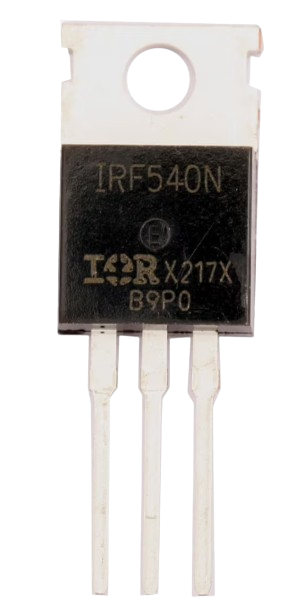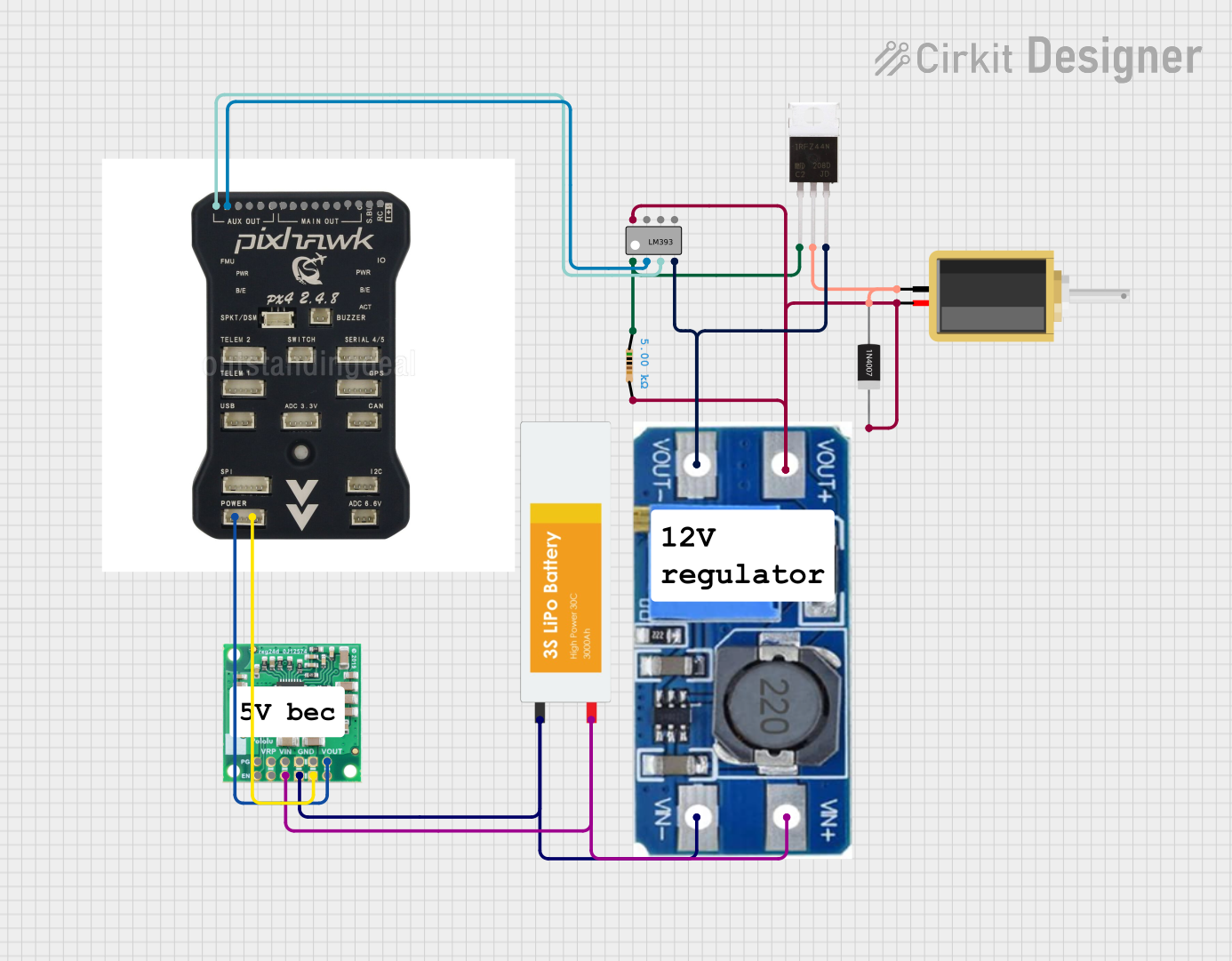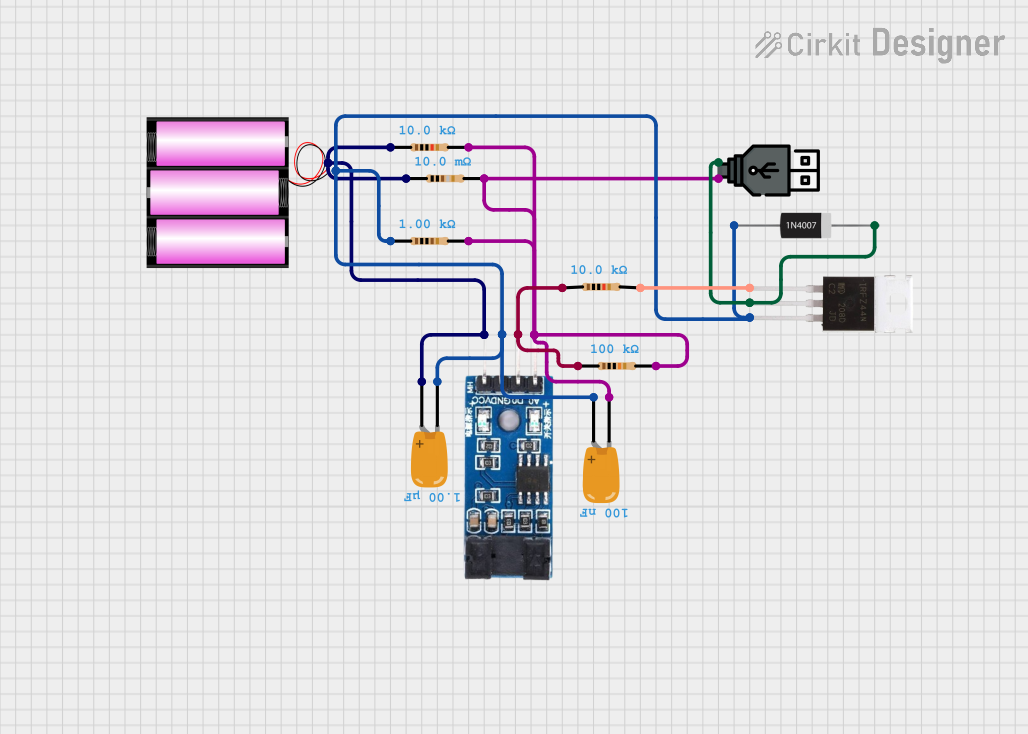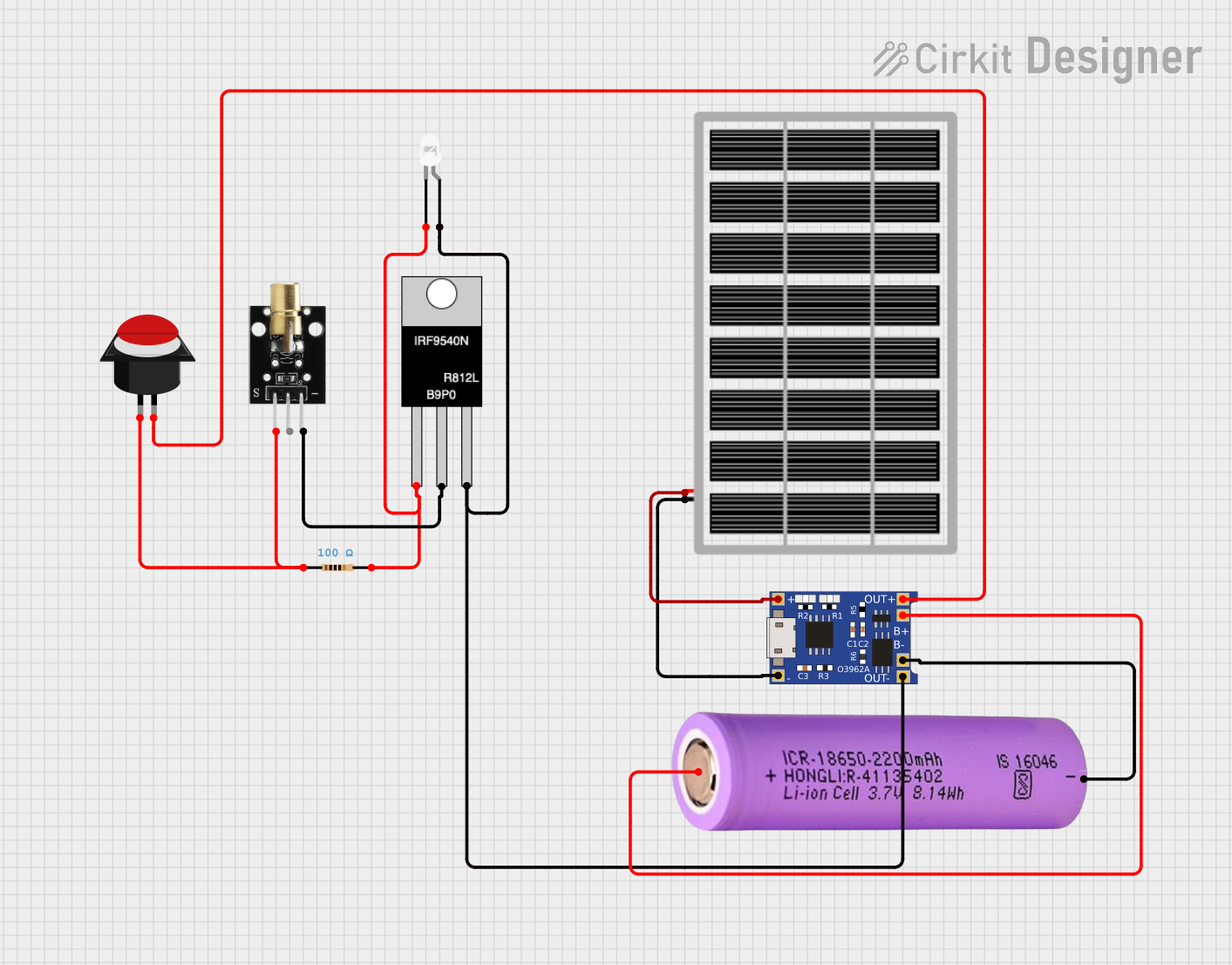
How to Use irf450n: Examples, Pinouts, and Specs

 Design with irf450n in Cirkit Designer
Design with irf450n in Cirkit DesignerIntroduction
The IRF450N is an N-channel MOSFET (Metal-Oxide-Semiconductor Field-Effect Transistor) designed for high-speed switching applications. It is widely used in circuits requiring efficient power management, motor control, and high-current switching. With its low on-resistance and high current handling capabilities, the IRF450N is ideal for applications such as DC-DC converters, motor drivers, and power inverters.
Explore Projects Built with irf450n

 Open Project in Cirkit Designer
Open Project in Cirkit Designer
 Open Project in Cirkit Designer
Open Project in Cirkit Designer
 Open Project in Cirkit Designer
Open Project in Cirkit Designer
 Open Project in Cirkit Designer
Open Project in Cirkit DesignerExplore Projects Built with irf450n

 Open Project in Cirkit Designer
Open Project in Cirkit Designer
 Open Project in Cirkit Designer
Open Project in Cirkit Designer
 Open Project in Cirkit Designer
Open Project in Cirkit Designer
 Open Project in Cirkit Designer
Open Project in Cirkit DesignerCommon Applications:
- Motor control circuits
- DC-DC converters
- Power inverters
- High-speed switching in industrial systems
- Battery management systems
Technical Specifications
Below are the key technical details of the IRF450N:
| Parameter | Value |
|---|---|
| Type | N-Channel MOSFET |
| Maximum Drain-Source Voltage (VDS) | 500V |
| Maximum Gate-Source Voltage (VGS) | ±20V |
| Continuous Drain Current (ID) | 14A |
| Pulsed Drain Current (IDM) | 56A |
| Power Dissipation (PD) | 150W |
| On-Resistance (RDS(on)) | 0.4Ω |
| Gate Threshold Voltage (VGS(th)) | 2.0V - 4.0V |
| Operating Temperature Range | -55°C to +175°C |
| Package Type | TO-247 |
Pin Configuration
The IRF450N is typically available in a TO-247 package with three pins. The pin configuration is as follows:
| Pin Number | Pin Name | Description |
|---|---|---|
| 1 | Gate (G) | Controls the MOSFET switching state |
| 2 | Drain (D) | Current flows from drain to source |
| 3 | Source (S) | Connected to the ground or load |
Usage Instructions
How to Use the IRF450N in a Circuit
- Gate Control: Apply a voltage to the Gate (G) to control the MOSFET's switching state. Ensure the gate voltage (VGS) is within the specified range (±20V).
- Drain-Source Connection: Connect the load between the Drain (D) and the positive supply voltage. The Source (S) is typically connected to ground.
- Gate Resistor: Use a resistor (typically 10Ω to 100Ω) in series with the Gate to limit inrush current and prevent damage to the MOSFET.
- Flyback Diode: For inductive loads (e.g., motors), include a flyback diode across the load to protect the MOSFET from voltage spikes during switching.
Example Circuit with Arduino UNO
The IRF450N can be used with an Arduino UNO to control a DC motor. Below is an example circuit and code:
Circuit Connections:
- Gate (G): Connect to an Arduino digital pin (e.g., D9) through a 100Ω resistor.
- Drain (D): Connect to one terminal of the motor.
- Source (S): Connect to ground.
- The other terminal of the motor connects to the positive supply voltage.
- Add a flyback diode across the motor terminals (cathode to positive supply).
Arduino Code:
// Example code to control a DC motor using the IRF450N MOSFET
// Connect the MOSFET Gate to pin D9 on the Arduino
const int motorPin = 9; // Pin connected to the MOSFET Gate
void setup() {
pinMode(motorPin, OUTPUT); // Set the motor pin as an output
}
void loop() {
digitalWrite(motorPin, HIGH); // Turn the motor ON
delay(1000); // Keep the motor ON for 1 second
digitalWrite(motorPin, LOW); // Turn the motor OFF
delay(1000); // Keep the motor OFF for 1 second
}
Important Considerations:
- Ensure the Gate-Source voltage (VGS) is sufficient to fully turn on the MOSFET. For the IRF450N, a VGS of 10V is recommended for optimal performance.
- Use proper heat dissipation methods (e.g., heatsinks) to prevent overheating during high-current operation.
- Avoid exceeding the maximum ratings for voltage, current, and power dissipation to prevent damage.
Troubleshooting and FAQs
Common Issues and Solutions:
MOSFET Not Switching Properly:
- Cause: Insufficient Gate voltage.
- Solution: Ensure the Gate voltage (VGS) is at least 10V for full enhancement.
Excessive Heat Generation:
- Cause: High current or inadequate heat dissipation.
- Solution: Use a heatsink or active cooling to manage heat. Verify that the load current is within the MOSFET's rated limits.
MOSFET Fails to Turn Off:
- Cause: Gate charge not fully discharged.
- Solution: Add a pull-down resistor (10kΩ) between the Gate and Source to ensure the Gate voltage is pulled to 0V when not driven.
Voltage Spikes Damaging the MOSFET:
- Cause: Inductive load without protection.
- Solution: Add a flyback diode across the load to suppress voltage spikes.
FAQs:
Q1: Can the IRF450N be driven directly by a 5V microcontroller?
A1: No, the IRF450N requires a Gate-Source voltage (VGS) of at least 10V for full enhancement. Use a Gate driver circuit or a logic-level MOSFET if driving directly from a 5V microcontroller.
Q2: What is the maximum current the IRF450N can handle?
A2: The IRF450N can handle a continuous current of 14A and a pulsed current of up to 56A, provided proper cooling is implemented.
Q3: Can the IRF450N be used for AC applications?
A3: The IRF450N is primarily designed for DC applications. For AC applications, consider using an H-bridge circuit or a TRIAC.
Q4: How do I protect the IRF450N from overvoltage?
A4: Use a TVS (Transient Voltage Suppressor) diode or a zener diode across the Drain-Source terminals to protect against overvoltage conditions.